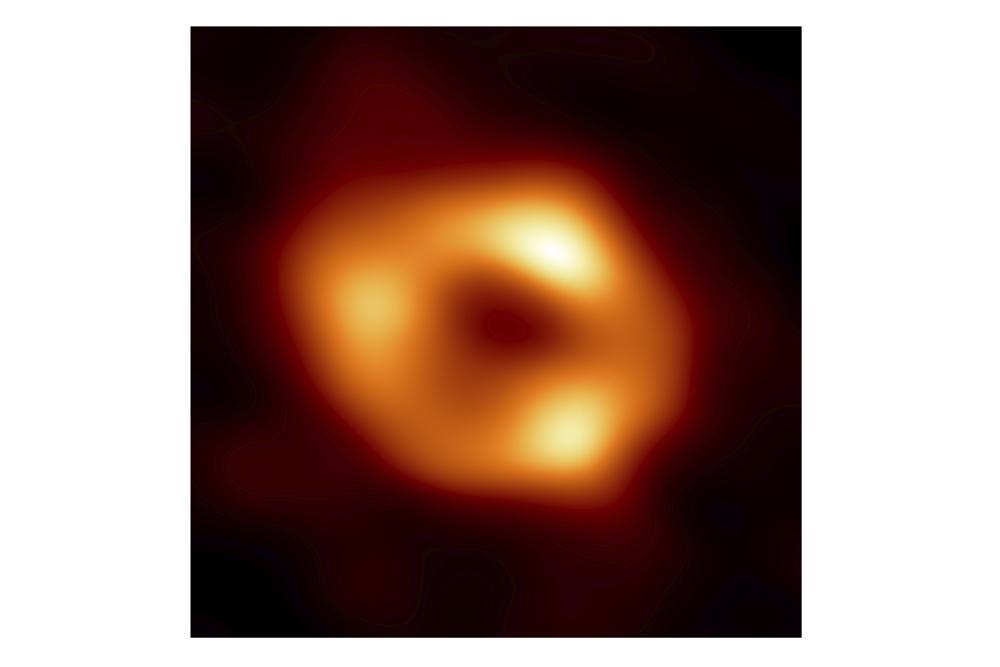Berlin, May 12: Astronomers on Thursday unveiled the first image of the supermassive black hole at the centre of our own Milky Way galaxy.
The finding, published in The Astrophysical Journal Letters, provides overwhelming evidence that the object is indeed a black hole and yields valuable clues about the workings of such giants, which are thought to reside at the centre of most galaxies.
The image was produced by a global research team called the Event Horizon Telescope (EHT) Collaboration, using observations from a worldwide network of radio telescopes.

The finding was unveiled during simultaneous press conferences around the world, including at the European Southern Observatory (ESO) headquarters in Germany.
The image is a long-anticipated look at the massive object that sits at the very centre of our galaxy. Scientists had previously seen stars orbiting around something invisible, compact, and very massive at the centre of the Milky Way.
This strongly suggested that this object known as Sagittarius A* (Sgr A* ) is a black hole, and the image provides the first direct visual evidence of it.
Although we cannot see the black hole itself, because it is completely dark, glowing gas around it reveals a tell-tale signature: a dark central region (called a shadow) surrounded by a bright ring-like structure, the researchers said.
The new view captures light bent by the powerful gravity of the black hole, which is four million times more massive than our Sun, they said.
We were stunned by how well the size of the ring agreed with predictions from Einstein's Theory of General Relativity," said EHT Project Scientist Geoffrey Bower from the Institute of Astronomy and Astrophysics, Academia Sinica, Taipei.
"These unprecedented observations have greatly improved our understanding of what happens at the very centre of our galaxy, and offer new insights on how these giant black holes interact with their surroundings," Bower said.
Because the black hole is about 27 000 light-years away from Earth, it appears to us to have about the same size in the sky as a doughnut on the Moon.
To image it, the team created the powerful EHT, which linked together eight existing radio observatories across the planet to form a single Earth-sized virtual telescope.
The EHT observed Sgr A* on multiple nights in 2017, collecting data for many hours in a row, similar to using a long exposure time on a camera.
Let the Truth be known. If you read VB and like VB, please be a VB Supporter and Help us deliver the Truth to one and all.
Amritsar (PTI): Former president Ram Nath Kovind on Friday said that with digital transformation, economic reforms and a strong focus on the ease of doing business, India is moving towards becoming a global economic powerhouse.
He was speaking after inaugurating the 19th edition of the Punjab International Trade Expo (PITEX) in Amritsar.
The former president said that this 19th edition of PITEX is being organised at a time when India is recognised as one of the fastest-growing large economies in the world.
Speaking at the inaugural ceremony of the event organised by the PHD Chamber of Commerce and Industry (PHDCCI) the former president, while referring to Punjab, said the state is a living example of courage, sacrifice and enterprise.
"The spiritual light of Sri Harmandir Sahib (Golden Temple) inspires peace and humanity across the world. The heritage of Punjab is deep and inspiring," Kovind said, according to a statement issued by the PITEX.
The former president congratulated the PHDCCI for hosting the 19th edition of PITEX and suggested that the chamber should expand PITEX outside Punjab.
He proposed that a similar event should also be held in New Delhi.


_vb_69.jpeg)


